Tonix Pharmaceuticals stock halted ahead of FDA approval news
Janus International Group (NYSE:JBI) reported significant revenue and profit declines in its first quarter 2025 earnings presentation on May 8, while announcing a structural cost reduction plan aimed at improving margins amid challenging market conditions.
Quarterly Performance Highlights
The self-storage solutions provider delivered $210.5 million in total revenue for Q1 2025, representing a 17.3% decrease compared to the same period last year. Net income fell to $10.8 million from $30.7 million in Q1 2024, while Adjusted EBITDA declined 42.1% to $38.4 million, resulting in an 18.2% margin.
The company’s self-storage segment, which accounts for 68.4% of total revenue, experienced a 23.1% decline, with new construction down 25.5% and restore, rebuild & replace (R3) services down 19.3%. The commercial and other segment showed more resilience, declining only 1.0% year-over-year.
As shown in the following chart detailing the company’s first quarter highlights and revenue mix:

Despite revenue and profit challenges, Janus maintained strong cash flow generation with $48.3 million from operations and free cash flow of $41.9 million. The company’s trailing twelve-month free cash flow conversion of adjusted net income reached 170%, demonstrating financial resilience amid market headwinds.
The following slide provides an overview of the first quarter results, highlighting the company’s performance metrics against the challenging macroeconomic backdrop:
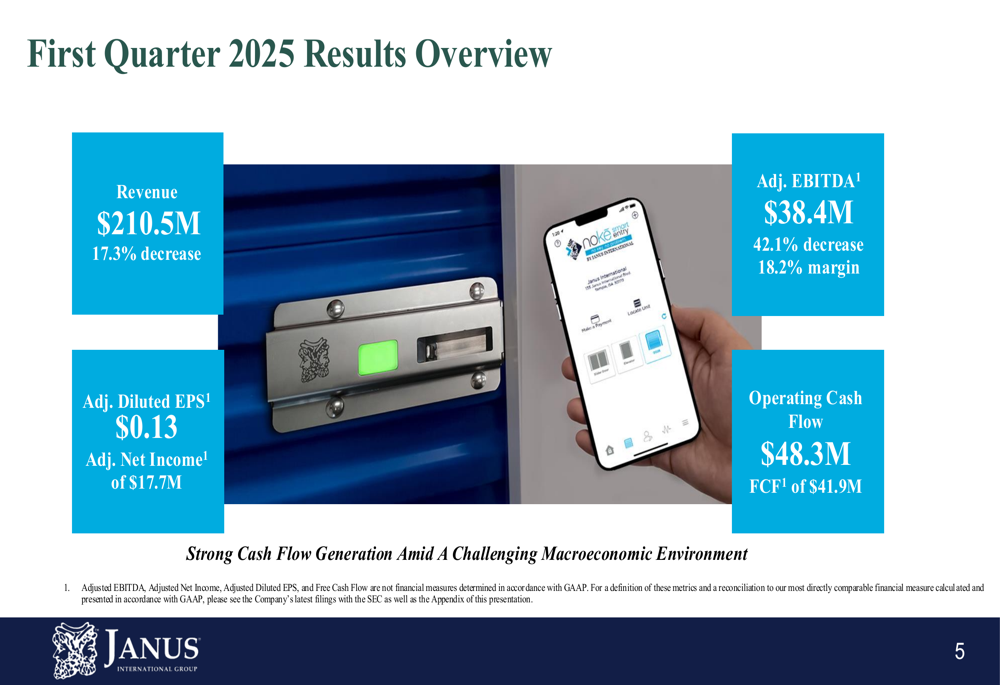
Detailed Financial Analysis
Janus provided a detailed breakdown of the factors driving its revenue and adjusted EBITDA performance. Volume declines had the most significant impact, reducing revenue by $42.6 million and adjusted EBITDA by $21.3 million compared to Q1 2024. Pricing also negatively affected both metrics by $4.9 million, while acquisitions contributed a positive $3.5 million to revenue.
The waterfall charts below illustrate these drivers:
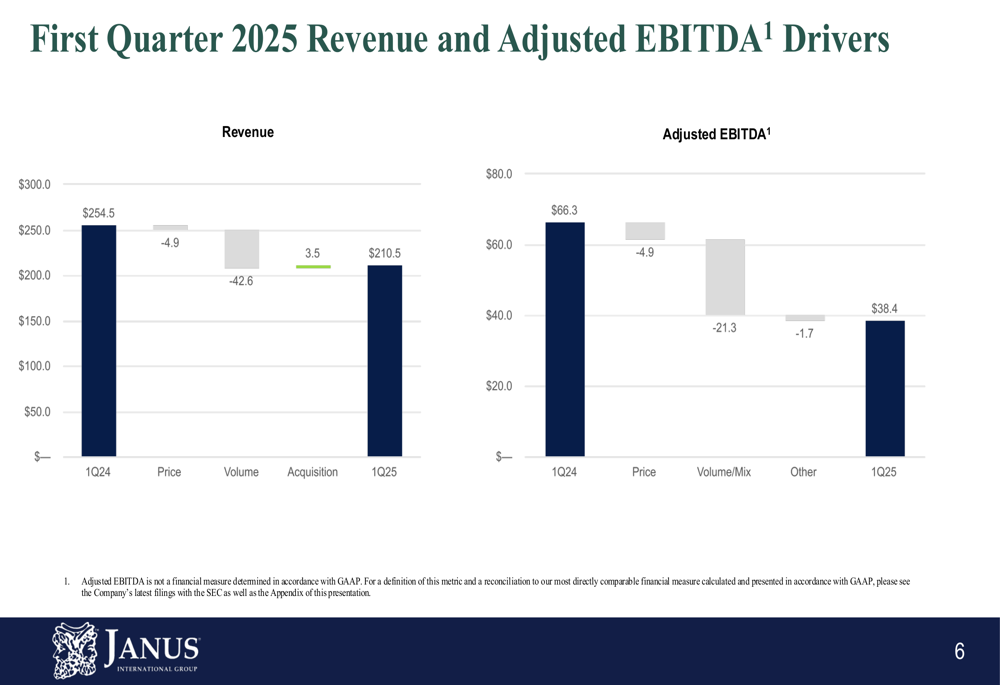
The company’s adjusted diluted earnings per share came in at $0.13, down from $0.25 in the prior-year period. Despite these declines, Janus maintained a strong balance sheet with a net leverage ratio of 2.3x, within its target range of 2.0x-3.0x.
During the quarter, Janus repurchased 0.6 million shares of common stock for $5.1 million and completed a voluntary prepayment of $40.0 million toward its First Lien Term Loan, demonstrating its commitment to shareholder returns and debt reduction.
Strategic Initiatives
In response to the challenging environment, Janus unveiled a structural cost reduction plan aimed at improving margins, simplifying organizational structure, and enhancing flexibility and efficiencies. The plan includes streamlining the labor force, rationalizing real estate holdings, and reducing selling, general and administrative costs.
The company expects to achieve annual pre-tax cost savings of $10-12 million, with approximately $1.5 million realized in Q1 2025. One-time pre-tax charges associated with the plan are estimated at $3-4 million, excluding a $5 million gain on the sale of a manufacturing facility recognized in Q4 2024.
The following slide outlines the key components of the cost reduction plan:
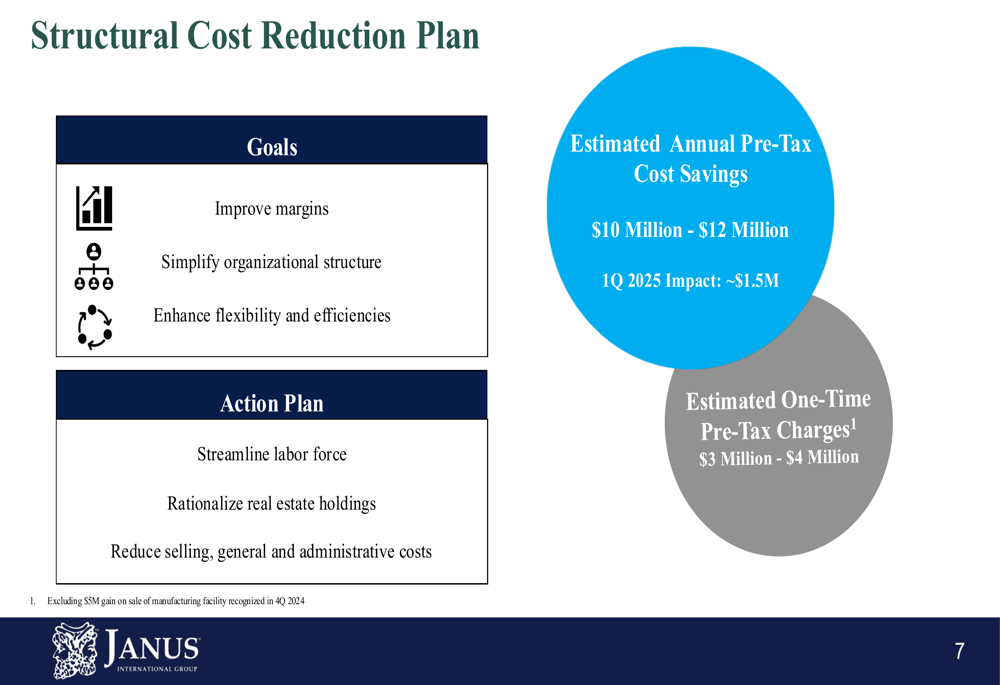
Janus continues to focus on its capital allocation strategy, emphasizing strong cash flow, financial flexibility, and disciplined deployment. The company maintains a focus on investing in growth through acquisitions in its core business and strategic adjacencies, while also returning capital to shareholders through share repurchases.
As illustrated in the following capital allocation strategy overview:
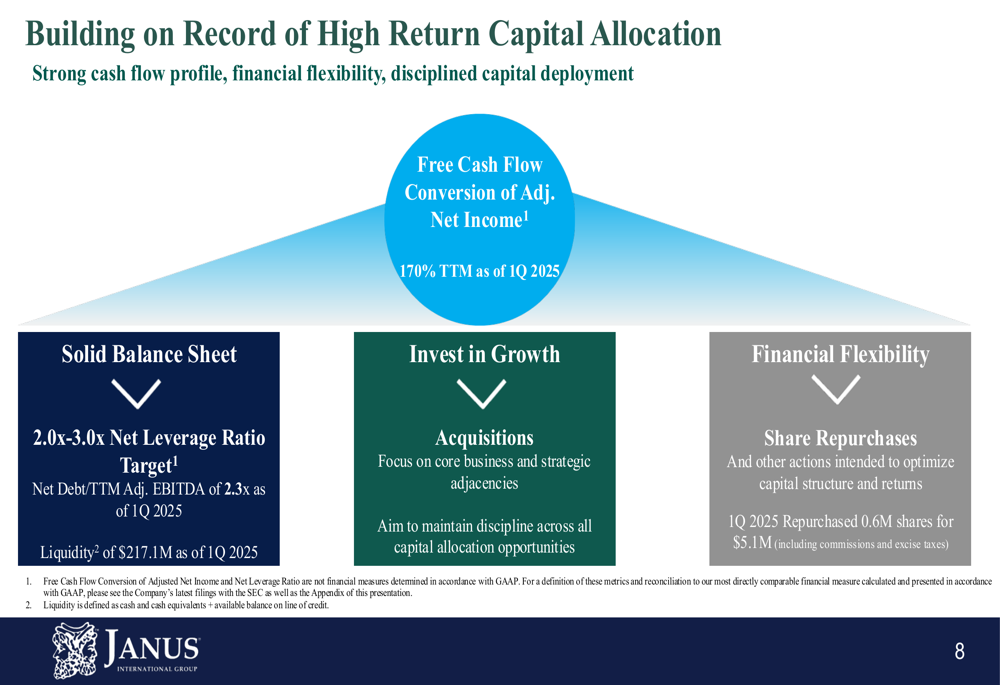
The company’s Nokē Smart Entry System continues to gain traction, with total installed units growing 5.2% sequentially to 384,000, underscoring Janus’s commitment to technology-driven solutions in the self-storage market.
Forward-Looking Statements
Despite the challenging first quarter, Janus maintained its full-year 2025 guidance, projecting revenue between $860 million and $890 million and adjusted EBITDA between $175 million and $195 million. Other key assumptions include depreciation and amortization of $40-50 million, capital expenditures of 1.5-2.0% of revenue, net interest expense of $36-40 million, and an effective tax rate of 27-29%.
The guidance and key planning assumptions are detailed in the following slide:
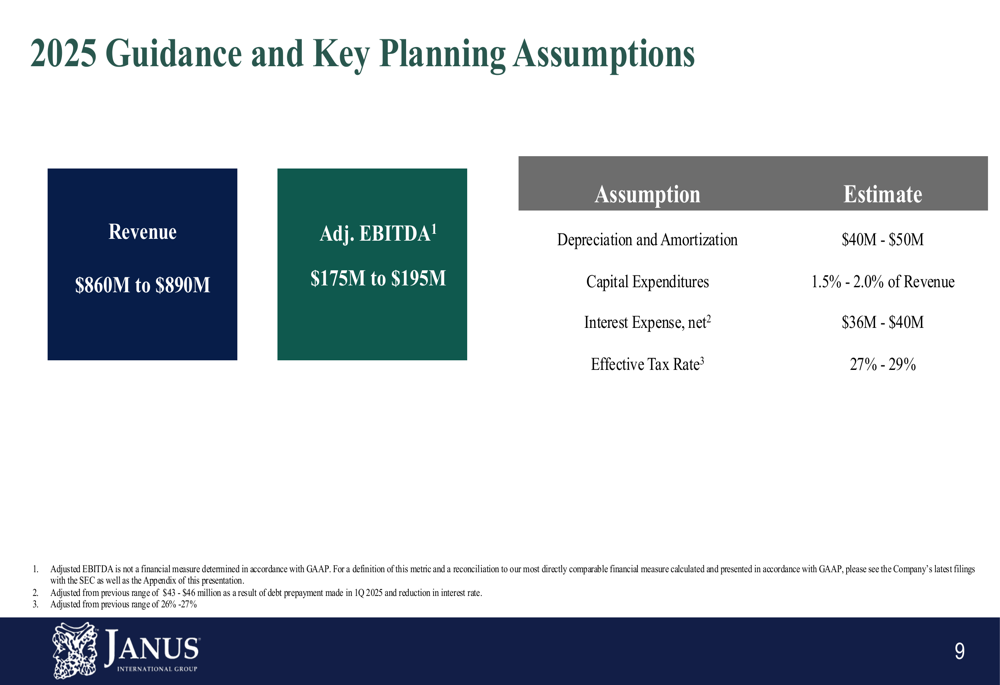
Looking beyond 2025, Janus emphasized its position as an industry leader in a well-structured market, highlighting sustainable demand drivers and a multi-faceted growth strategy. The company plans to further penetrate the self-storage market, drive adoption of access control technology, increase share in the commercial market, and pursue strategic, accretive acquisitions.
The long-term fundamentals and investment overview are presented in the following slide:
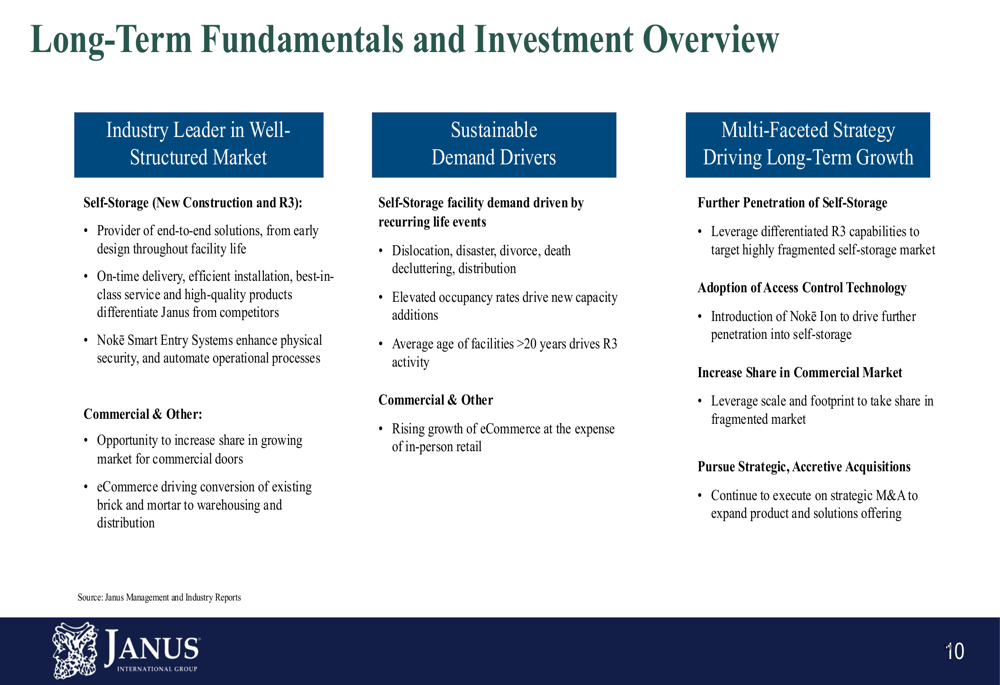
Janus International’s stock closed at $7.15 on May 7, 2025, down 1.24% for the day, but rose 4.2% to $7.45 in after-hours trading. The stock remains significantly below its 52-week high of $15.24, reflecting ongoing investor concerns about the challenging market environment facing the company.
While the first quarter results show significant pressure on Janus’s core business, management’s focus on cost reduction, strong cash flow generation, and maintained full-year guidance suggest confidence in a potential recovery in the latter part of 2025. Investors will be watching closely to see if the company’s strategic initiatives can offset the current market headwinds and deliver on its full-year projections.
Full presentation:
This article was generated with the support of AI and reviewed by an editor. For more information see our T&C.
